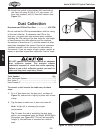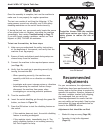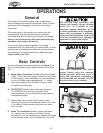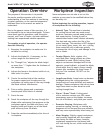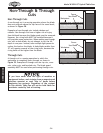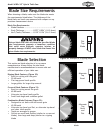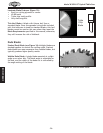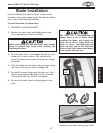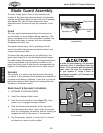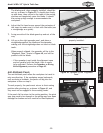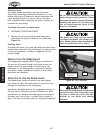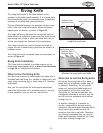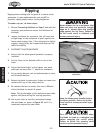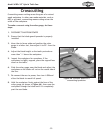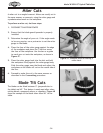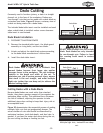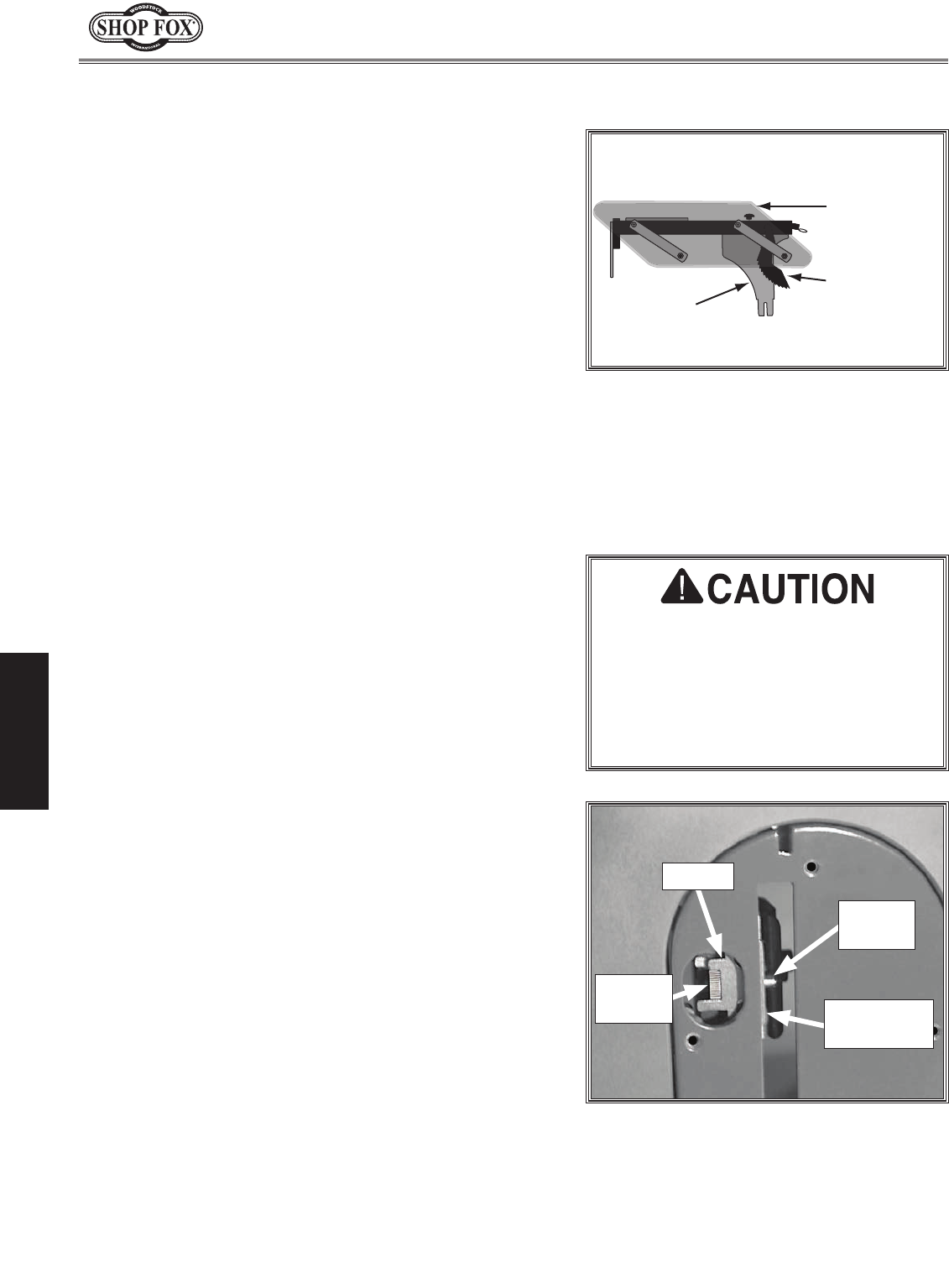
Df[\cN(/)+('?pYi`[KXYc\JXn
-28-
FG<I8K@FEJ
Blade Guard Assembly
The term "blade guard" refers to the assembly that
consists of the clear polycarbonate shield, the spreader,
and the anti-kickback pawls on each side of the spreader
(see Figure 37). Each of these components have
important safety functions during the operation of the
saw.
Guard
The clear polycarbonate guard allows the operator to
see the blade cut the workpiece during operation. This
guard is designed to lift as the workpiece is pushed into
the blade and remain in contact with the workpiece
throughout the entire cut.
The guard reduces injury risk by providing a barrier
around the blade that prevents accidental contact and
contains flying wood chips.
To ensure that the guard does its job effectively, the
guard must always be in the downward position against
the table during idle operation, and the hinge mechanism
must be maintained in good working condition so the
guard can freely pivot up and down to accommodate the
height of the workpiece and return to the table surface.
Spreader
The spreader is a metal plate that prevents the freshly
cut pieces of the workpiece from pinching the backside of
the blade and causing a kickback. It also acts as a barrier
behind the blade to shield hands from being pulled into
the blade if a kickback occurs.
Blade Guard & Spreader Installation
1. DISCONNECT SAW FROM POWER!
2. Install the standard table insert.
3. Slide the knurled knob out (see Figure 38), then
rotate it so it engages the upper bracket.
4. Slide the blade guard spreader all the way down
into the adjustment block, then rotate the knurled
knob so it disengages the bracket and the locking pin
engages the hole in the center of the spreader.
5. Tug the spreader upward to verify that it is locked
and does not come out when pulled.
Clear Guard
Anti-Kickback
Pawl
Spreader
Figure 37. Blade guard assembly
components.
In order to work properly, the spreader
cannot be bent or misaligned with the
blade. If the spreader gets accidentally
bent, take the time to straighten it
or just replace it. Using a bent or
misaligned spreader will increase the
risk of kickback!
Figure 38. Knurled knob used to secure
the spreader.
Knurled
Knob
Bracket
Locking
Pin
Adjustment
Block



